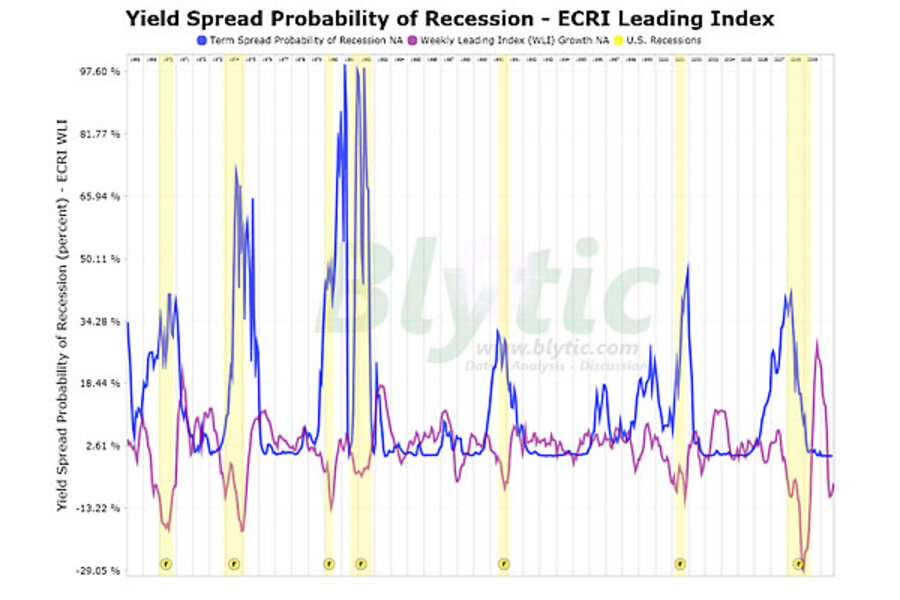How to predict a recession (or a double-dip)
Loading...
With much of the econ-finance talk these days still centered around the possibility of a looming “double-dip” let’s take a closer look at two particularly sensitive and accurate leading indicators of our economic health to see if we can tease out the future trends.
First, the Federal Reserve Bank of New York is known to use the yield curve (or more specifically the spread between the 10 year and the 3 month treasury yields) to calculate a probability of recession.
This method appears to have been spearheaded by Professor Arturo Estrella of the Rensselaer Polytechnic Institute and Professor Frederic Mishkin of the Columbia Business School as outlined in the June 1996 issue of Current Issues in Economic and Finance, a journal published by the Federal Reserve Bank of New York.
The yield curve probability method is said to have a nearly perfect track record at predicting recessions some two to six quarters ahead with only one false positive, a period in 1967 that many economists, most notably the late Milton Friedman, considered to have been a credit crunch/mini-recession even though the NBER does not officially recognize it as such.
Another important leading indicator with a solid track record is the Economic Cycle Research Institutes (ECRI) weekly leading indicator (WLI).
When the growth component of the WLI turns strongly negative (< -6) it generally means a notable slowdown or recession is in the offing.
So what are these two important indicators saying about our current economic situation?
As of the latest release of each measure, we are seeing a very unusual scenario of strongly mixed signals.
The yield curve spread indicator is indicating that the probability of recession is nearly zero while the ECRI leading index is showing a very pronounced pullback since a peak set in October 2009 with the growth component currently at a strongly negative level of -6.9.
Looking at the chart (click for full-screen super dynamic version) you can see that in the past, when both of these measures moved strongly in opposite directions, recession was a certainty.
Today though, the interpretation is not so simple.
Could the Feds work on both short (ZIRP) and long (QE1 and soon QE2) rates have rendered the yield curve method ineffective at the moment?
Is the WLI just over-correcting coming off of an epically pronounced bounce back in leading activity seen from the deeply recessed levels of March of 2009?
We will have to wait to see but clearly we are in a very unusual and tricky environment.
Add/view comments on this post.
------------------------------
The Christian Science Monitor has assembled a diverse group of the best economy-related bloggers out there. Our guest bloggers are not employed or directed by the Monitor and the views expressed are the bloggers' own, as is responsibility for the content of their blogs. To contact us about a blogger, click here. To add or view a comment on a guest blog, please go to the blogger's own site by clicking on the link above.





